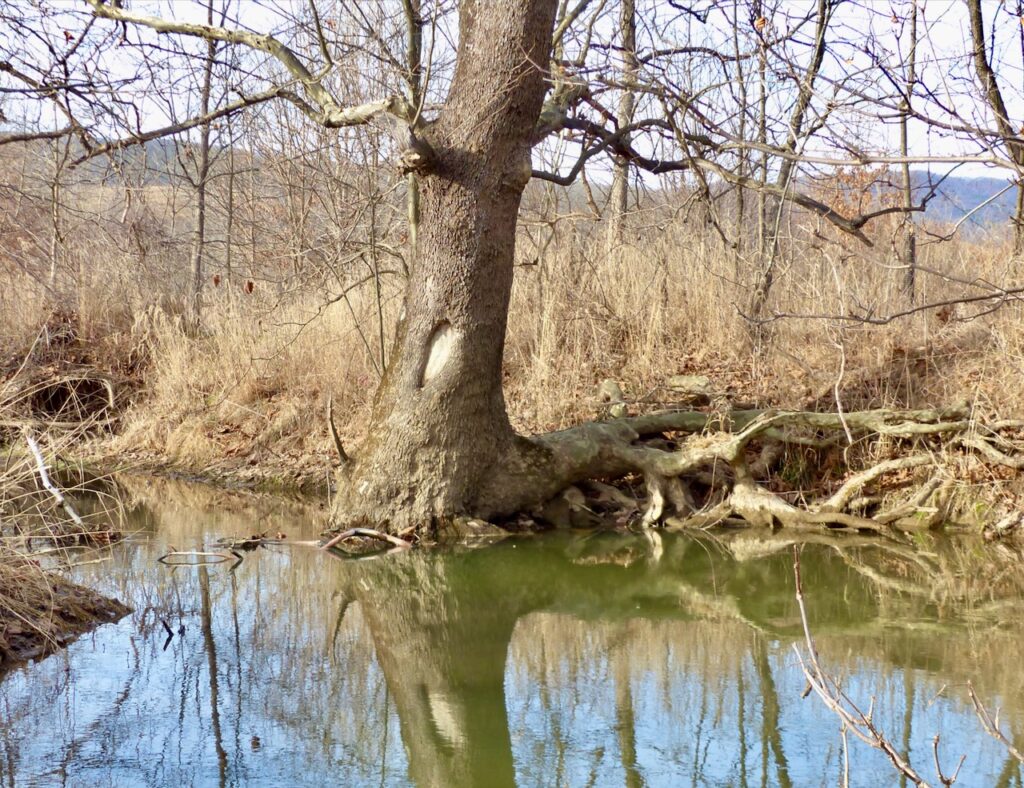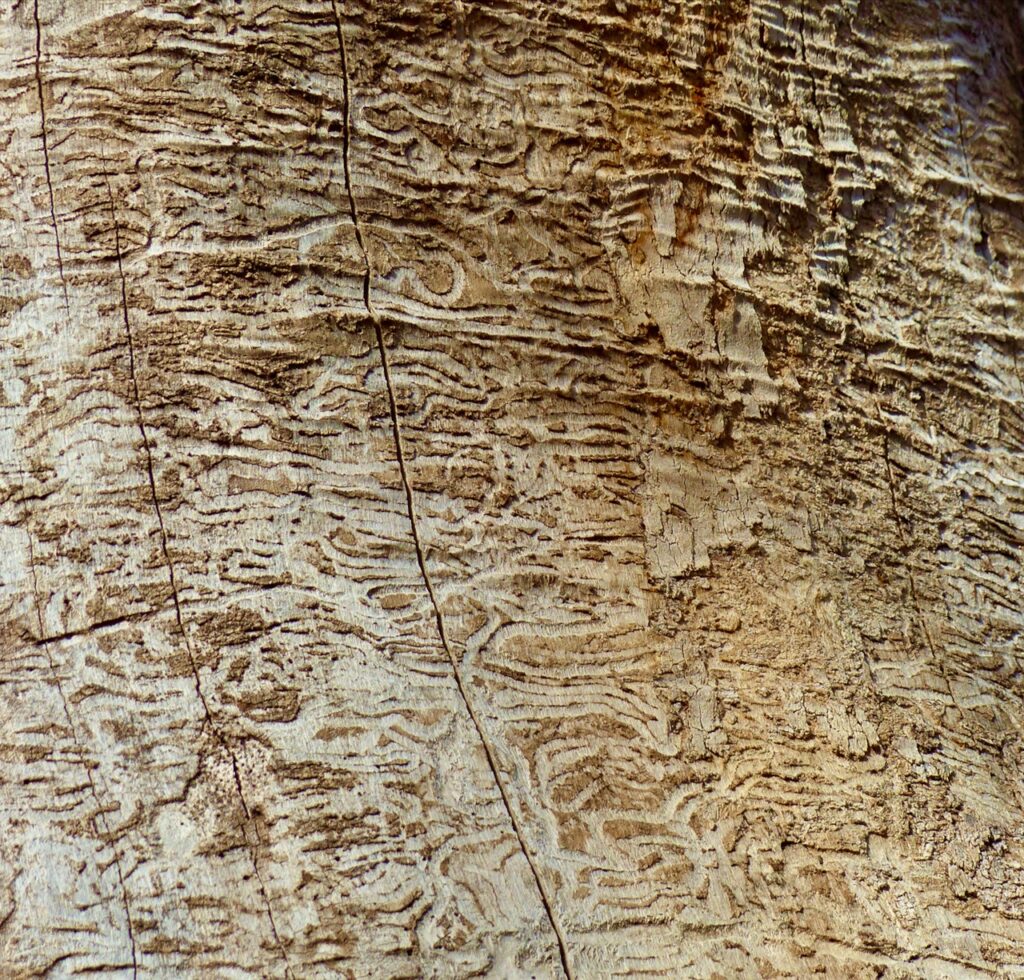We have a small farm in Swoope along Trimbles Mill Road. The Middle River flows through it for half a mile. We call it the River Farm. The cows were fenced away from the river in 2004, and we planted trees along the banks.
Sycamores Hold the Line
I walk slowly along the Middle River and wonder what treasures await. Today, I’m drawn to the huge sycamore trees anchoring the banks of the river. Their exposed roots look like the arms of an octopus holding on for dear life, and during a flood, I’m sure they are. Rivers and their banks are in ephemeral motion. Stabilizing riverbanks from the forces of flooding has been the work of engineers for centuries. I’m not sure they’ve figured it out yet, but the Sycamores have. I can’t think of a more noble warrior for stabilizing a riverbank than a tree. And an army of them is a powerful force for a raging river to reckon with.
White Oak on the Hill
On a small hill next to a tributary of the river is a towering, centuries-old White Oak that predates the American Revolution. The cows love to stand under it. The farm has plenty of other shade trees they can get cool under, so why do they prefer this one? Maybe they can sense its healing powers or understand the stories it could tell from the past 300 years. I give the old tree several hugs and slowly feel its rough bark, hoping to connect our spirits.
Green Ash Graveyard
I walk further along Middle River and lament the loss of the giant, old Green Ash trees at the river. All are dead or dying. The ones along Trimbles Mill Road were cut down a few years ago by the Virginia Department of Transportation. Those had laid down 140 years of carbon in their rings.
The two giant ones in the middle of the farm served the river and its banks well, shading the water, providing leaves to the critters in the water, and habitat for a whole host of animals. They are now among the dead. The trees were as big and as old as the ones on the road. They laid down rings beginning in 1880, a mere 16 years after the Civil War.
The bark is gone from a big section of one of our Green Ash trees, and I can see the trails the Emerald Ash Borer larvae made as they ate the tree’s vascular system.
I wonder whether the tree felt pain as the larvae consumed its cambium layer.
Will the Ash trees recover? Or will they succumb to the invasive creatures killing them as the American Chestnut did to the Chestnut blight? I don’t think anyone knows the answer yet, but professionals are working to save the Ash, using biological controls and systemic insecticides.
The wood of Green Ash deteriorates rather quickly. To honor these fallen protectors of the river, I gather some of their dead wood to make small memorials so I can remember what wonderful trees they are and hope they will return someday.






10 Comments
Leave your reply.